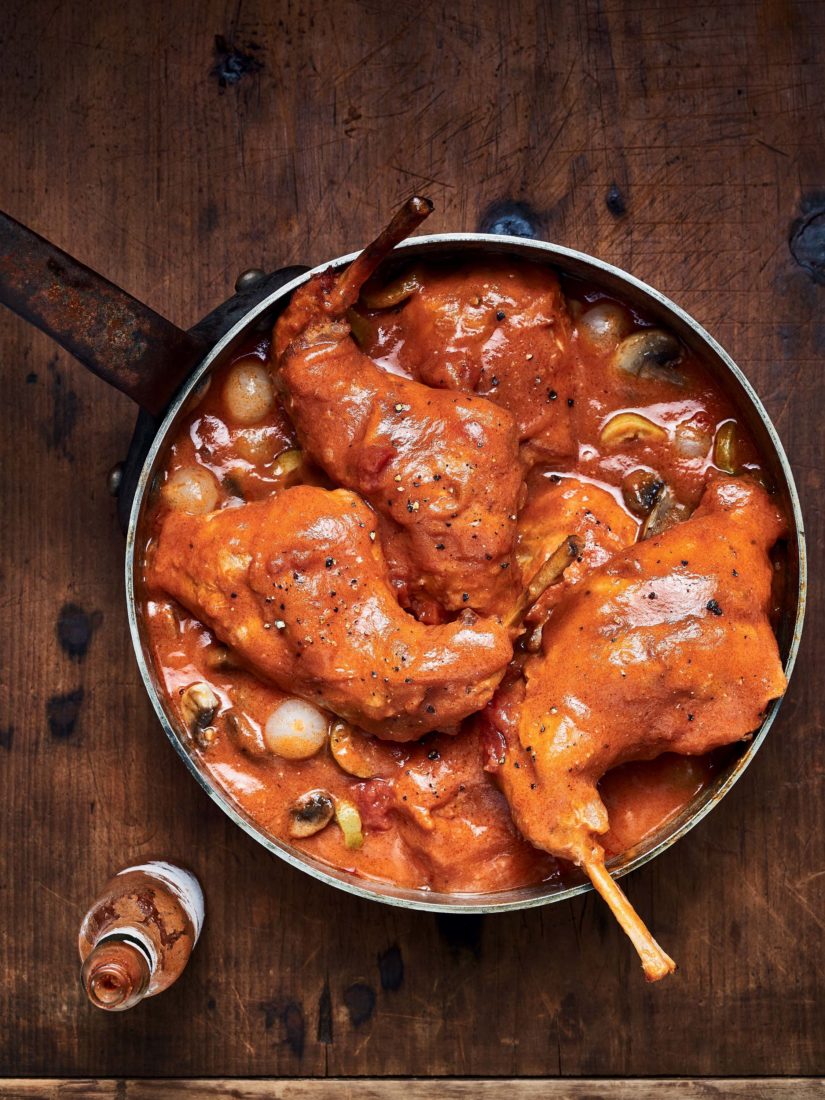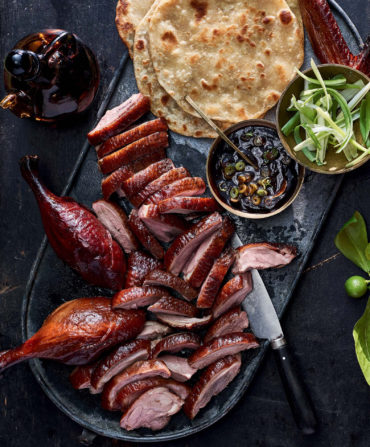It’s not the aroma or the flavor of rabbit sauce piquante (“pee-quohn”) that Jean-Paul Bourgeois recalls as his first food memory; it’s the experience of watching his father, Lloyd, cook a big vat of the spicy, roux-thickened tomato-based stew at the St. Philomena Parish fair. “What I remember the most is seeing a community of five thousand people come together and get so excited for a cook-off. And not only that, but seeing my dad so excited to cook—not because of the competition, but because he loves feeding people, just as I do.”
That love led Bourgeois to study at Louisiana’s Chef John Folse Culinary Institute, then drove him to New York City, to helm the kitchen (and the pits) at Blue Smoke, Danny Meyer’s pan-Southern barbecue restaurant. Bourgeois earned Blue Smoke some of its best reviews before departing earlier this year to, as he says, get back to the “purity of feeding people, not thinking about seat numbers,” at pop-ups and guest-chef stints around the country.
When he was a child in Labadieville and Thibodaux, Louisiana, squirrels were Bourgeois’s first quarry, pursued through the oak and pecan trees. Rabbits came next, run by beagles through sugarcane fields. “I was incredibly fortunate to grow up and—I mean this in every sense of the words—to live off the land,” he says. “We ate out of the freezer three or four nights of the week, whether that was perch and catfish I caught from Bayou Lafourche or ducks or rabbits that my dad would sometimes trade for redfish or wild hog.”
Sauce piquante can be made with any kind of meat, from squirrel to alligator. It simmers slowly, the broth thickened with roux. (“It’s an ongoing joke in Louisiana cooking that ‘first you make a roux,’” Bourgeois says, laughing.) That slow simmer is key, especially when working with rabbit. “You don’t want to disturb the rabbit too much,” he says. “The meat should be almost—but not quite—falling off the bones.” Fish the pieces out of the sauce and gently pull the meat apart before returning it to the pot and serving.








